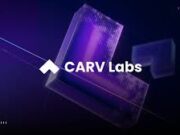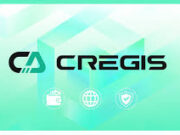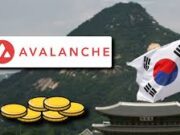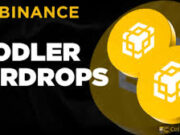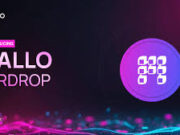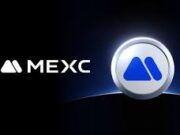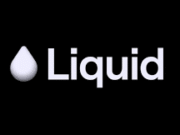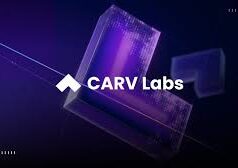The blockchain world is stirring. At the recent Kaia Summit 2025, the Kaia Foundation unveiled plans that go far beyond mere announcements—they signalled a shift in how users, developers and enterprises will engage with the ecosystem. Central to this shift: the integration of Tether (USDT) into the Kaia Chain platform, combined with a forthcoming roadmap for its decentralized-finance (DeFi) ecosystem.
In this post, we’ll explore what this expansion means, how Kaia intends to build out its DeFi layers, and what it could imply for users and developers alike.
What the USDT Integration Involves
Kaia Chain, a high-performance public EVM-compatible Layer 1 blockchain tailored for Web3 adoption across Asia, already supports rapid block times, seamless wallet integration and connections with major messenger apps. (kaia.io)
With the USDT announcement, the key enhancements include:
- USDT becomes native on the Kaia Chain network, enabling users and dApps on the chain to transact using a widely accepted, fiat-pegged stablecoin. (Coinfomania)
- The integration supports fast transfers, greater liquidity and reduced volatility exposure for users who prefer a stable value store rather than pure speculative tokens. (Coinfomania)
- The move bolsters Kaia’s ambition to bridge blockchain infrastructure with mainstream financial flows—particularly in Asia, where stablecoins are increasingly important for cross-border payments and remittance corridors. (AInvest)
By embracing USDT, Kaia doesn’t just add a token—it anchors part of its ecosystem in something many users recognise and trust, thereby reducing on-ramp friction and broadening appeal.
The Ecosystem Impacts: Liquidity, Stability & Interoperability
Integrating USDT brings several tangible ecosystem benefits:
Greater Liquidity and Utility: With a stablecoin available, users and dApps can operate in a “less volatile” environment, especially useful for payments, trading pairs, DeFi protocols, and in-game economies. The stable value of USDT means that users aren’t dealing with the wild swings typical of many crypto assets.
Faster, Cheaper Transactions: Kaia Chain touts instant finality and sub-second block times, making it well suited to stable-coin transfers, micropayments or applications where speed matters. (kaia.io)
Improved On-Ramp for Developers and Builders: For developers aiming to build DeFi protocols, games, or tokenised real-world-assets (RWA) platforms, having native USDT means they can design around a stable reference value without relying solely on volatile native tokens.
Cross-Chain and Global Flows: Since USDT is already broadly used across many chains and exchanges, its presence on Kaia may accelerate cross-chain interoperability, and enable Kaia users to more fluidly access external liquidity or on-ramp from other chains. The summit flagged stablecoins as a central pillar for payments in emerging markets. (AInvest)
Together, these elements reinforce Kaia’s positioning not just as a fast chain, but as a practical infrastructure for real-use cases: payments, DeFi, tokenised assets, gaming economies and beyond.
Roadmap for the DeFi Ecosystem: Kaia’s Vision Forward
But the story doesn’t stop at USDT. At the summit, Kaia Foundation detailed its broader DeFi roadmap, and the pieces are ambitious. Here are the key pillars:
1. Expand Lending, Yield & Automated Market Makers (AMMs)
Kaia plans to support a full suite of DeFi primitives: lending/borrowing platforms, yield optimisation, and AMMs. This means users will be able to deposit assets (including USDT) and participate in financial flows previously limited to established chains. The emphasis is on institutional-grade infrastructure—security, governance, composability. (AInvest)
2. Tokenisation of Real-World Assets (RWA)
One of the most interesting directions is the tokenisation of physical assets—real estate, commodities, bonds—on-chain. The summit highlighted RWA as a major growth frontier, with Kaia aiming to support these use cases. (AInvest) This means users may soon see offerings like fractional property ownership, tokenised debt instruments or yield-bearing real assets accessible to retail users via Kaia’s infrastructure.
3. Interoperability and Cross-Chain Bridges
Kaia emphasised enabling seamless movement of assets across chains—users won’t be siloed. The architecture supports EVM equivalence, and integrations with major cross-chain bridges are part of the design. (kaia.io) This means the USDT integration could serve as a gateway for liquidity from other chains too.
4. Developer Ecosystem, dApps and Mini-Apps
With over 250 million potential users via messenger integrations, Kaia is positioning itself as a “Web3 for all” infrastructure. (kaia.io) The roadmap calls for onboarding more dApps and mini-apps, with USDT built in, allowing frictionless onboarding for users who might be new to crypto. Developers will have grants, SDKs and ecosystem support to build. The USDT move reinforces the user-facing side: a familiar asset, easier to trust.
5. Global Expansion with Asian Market Focus
Asia remains a core focus. The summit, held in Singapore, emphasised the region’s leadership in stablecoin adoption, cross-border payments and digital economy growth. (AInvest) Kaia’s roadmap indicates collaboration with major messenger apps (LINE, Kakao) and targeting of Asian users, making the stablecoin-enabled DeFi offering more accessible in everyday contexts (payments, gaming, remittance).
What This Means for Users and Developers
For Users
- You’ll have access to a stablecoin (USDT) on a fast, scalable chain—meaning cheaper, faster transfers and lower entry barriers.
- If you’re curious about DeFi but worried about volatility, the presence of USDT makes experimentation safer.
- Games, mini apps and social apps built on Kaia may integrate USDT for payments, rewards, in-app purchases—user-friendly adoption is likely.
- Because Kaia emphasises Asia, there may be tailored experiences for users in that region (including Nigeria, Africa and beyond—although accessibility will depend on local exchange support and regulations).
For Developers and Builders
- Your DApp can natively support deposits/withdrawals in exactly one of the most trusted stablecoins globally.
- Tokenising assets becomes more straightforward when you build with a stable-value layer (USDT) rather than just volatile native tokens.
- Bridge interactions: if your app connects other chains or users from different networks, having USDT on Kaia helps with bridging liquidity.
- For gaming economy builders: in-game reward tokens pegged or collateralised by USDT could reduce friction and complexity for onboarding.
- Projects targeting real-world assets, payments, or social finance may find the combination of Kaia’s infrastructure + USDT a compelling stack.
Considerations & Potential Headwinds
- While USDT is widely accepted, regulatory scrutiny around stablecoins is increasing globally. Projects must plan for compliance, reserve transparency and jurisdiction-specific risks. (LinkedIn)
- Adoption will depend not only on infrastructure but on liquidity. Meaning: will major exchanges and wallets support USDT transfers on Kaia, will bridges work smoothly, will users find the on-ramp easy?
- Tokenising RWAs is a complex domain: legal frameworks, custodians, audits all matter. The roadmap is ambitious, and execution will take time.
- While Asia is central to the Kaia story, global accessibility (including in Africa and Latin America) will depend on regional partners, exchanges, tariffs and regulations. For users in Nigeria and other markets, local exchange support and regulatory clarity will matter.
- Competition is fierce: many chains are pursuing DeFi, stablecoin adoption and RWA tokenisation. Kaia must differentiate on speed, user-friendly onboarding, and regional network effects.
Next Moves (In Development)
According to announcements from Kaia Foundation and coverage of the summit, upcoming steps include:
- Launching USDT deposit/withdrawal support on major exchanges and Kaia-compatible wallets. For example, deposit campaigns have already been announced. (Crypto.com)
- Deployment of DeFi modules: AMMs, lending platforms, yield protocols that integrate USDT and other stable assets.
- Partnering with gaming and social app ecosystems (via LINE, Kakao) to integrate mini-apps where users interact via stablecoins without complex wallet setup.
- Roll-out of tokenised real-world-asset platforms: fractional real estate, tokenised bonds or commodities, accessible via Kaia Chain.
- Enhancing cross-chain bridging: connecting Kaia to other chains where USDT already flows, thereby allowing liquidity migration and multi-chain participation.
- Developer support programmes: grants, SDK enhancements, hackathons (likely tied to the next wave of mini-apps and DeFi protocols).
- Marketing and user-education efforts in Asia and emerging markets, to onboard mainstream users who may not yet be familiar with crypto.
Why This Development Carries Significance
The integration of USDT into Kaia Chain and the outlined DeFi roadmap matter for several reasons:
- They bridge the gap between traditional value (fiat-pegged stability) and blockchain speed/liquidity. Many crypto users are comfortable with volatile tokens; everyday users prefer stability.
- They reflect a broader trend: stablecoins are becoming the backbone of blockchain payments and cross-border flows (especially in regions where fiat access is limited). Kaia’s Asia-focused strategy taps into this. (AInvest)
- They reinforce that DeFi is maturing: not just token farms and speculative yields, but infrastructure for real-world assets, payments, social apps and games.
- For users, this means blockchain experiences become more mainstream: fewer hurdles, more familiar assets, easier onboarding.
- For developers, this means one can build globally-accessible apps with native stable value, reducing reliance on unpredictable token price swings.
- For emerging markets (like Nigeria, Africa), chains like Kaia that offer low fees, fast finality, stablecoin support may open new opportunities for payments, remittances, gaming economies or DeFi access.
Ending
In summary, the Kaia Foundation’s announcement around USDT integration combined with a rich DeFi roadmap signals a strategic pivot: from solely blockchain infrastructure to a full-fledged web3 ecosystem that is accessible, stable and regionally tailored.
For you—as a user, developer or just someone watching crypto evolution—this means there’s a platform that is gearing up to offer something tangible: stablecoins you recognise, fast transactions, access to DeFi primitives and potentially real-world asset exposure.
While the execution will matter and regulatory or bridging hurdles remain, the vision is compelling. If you’re in a market where traditional finance doesn’t always serve you well, or you’re looking to build apps where everyday users can jump in with minimal friction, this is worth watching.
Stay tuned: as major exchanges list USDT on Kaia Chain, as bridges open, as DeFi apps deploy—this could become one of the more interesting ecosystems in the next wave of blockchain adoption.
Sources:
- “Kaia Blockchain and USDT Integration Transforms Crypto Transactions,” Coinfomania, May 7 2025. (Coinfomania)
- “Blockchain Innovation in Financial Services: High-Conviction Investment Opportunities from the Kaia Summit 2025,” AINvest, Oct 9 2025. (AInvest)
- “Kaia Summit 2025: Shaping the Stablecoin Wave,” Luma Event Listing. (Luma)
- Kaia Chain official website. (kaia.io)
- “Stand a Chance to Win Up to US$750 Worth of KAIA,” Crypto.com campaign page. (Crypto.com)


